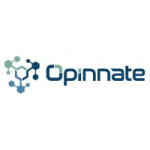What is our primary use case?
We use Tufin to do the review of rules, best practices, changes, and usage. So, it's an outside entity looking in to see what's happening on the rules sides. Then, we can do recertification for our rules, so they can be used again. Tufin puts it together really well, saying what's needed or not, then cleaning things up. We've been a customer for a very long time with them, and we're pretty pleased.
How has it helped my organization?
The solution's visibility is excellent for Check Point.
There's a new feature that validates standards. It allows the checks and balances against it, so it doesn't even go forward. It just says, "You're not right. Do it again."
We just got done with major audits. Tufin was able to provide information to give back to people, and say, "Hey, this is what I need to do, and what we're doing."
It's working on helping us meet our compliance mandates. We're a bank, so we're always chasing it, but it is helping us a lot. Rule recertifications are our biggest thing. However, what happens in the world of firewalls is people will put in rules to get what they need but don't ever clean them up when they stop using them.
What is most valuable?
The reporting is very good and provides in-depth knowledge for Check Point. We can write the rules as we see them. We can review rules and do searches. It has its own database which pulls all the information in regularly. This is very nice, and it is a good product for us.
I like the change impact analysis. It tells you what is going on,so you can review what has changed. In case you have to go backwards, and say, “Oops, that wasn't supposed to happen. How do I go get it?”
What needs improvement?
We were just talking to them about usage for the F5 platform. They will not be going after specific environments, but a more OpenAPI. They will have other companies write it, etc. It's a little different than I had expected.
What do I think about the stability of the solution?
It is a very stable product.
What do I think about the scalability of the solution?
It has very good growth. The scalability is very nice. We're doing a distributed environment right now. So, it has met our needs, which is nice.
How are customer service and technical support?
The technical support has been excellent.
How was the initial setup?
We were the first North American company to do this product, a long time ago. So, I don't know how the initial setup went. It's been a while. However, every time we go back and do stuff, it has been a pretty straightforward installation.
What about the implementation team?
We used an integrator and professional services.
The overall experience was very good. I liked it.
What was our ROI?
What other advice do I have?
Buy Tufin because it works! I love the product. It's been a great product to work with. The people are great, and the support is awesome. I have had no downside out of it.
We're just getting started on the change workflow. So, we're learning it, and it's working well.
It helps with our review process. We do a peer review, saying "Hi, here's all the changes," then you can look at it and go, "Oops I forgot something," or, "I don't think that was in any drop," and we can go back and review that. This is where it helps us minimizes errors. Before Tufin, we would not end up not catching these errors.
We are automating, so we are getting to a place where our engineers are spending less time on manual processes.
Disclosure: My company does not have a business relationship with this vendor other than being a customer.













Hi! Thanks for your review. I am so happy you have seen a 50% decrease in the time it takes to make firewall changes and are finding value in automation. I would like to address this comment "The solution's cloud-native security features are lackluster. They need to catch up to where the industry is at." At present Tufin's cloud-native security product (Iris) is still in beta - so I would love to explore more about what you are trying to accomplish. Tufin strives to meet our customers' needs. When working with some of the most complex configurations it is difficult to cover every conceivable possibility and while not perfect we continue to improve our capabilities to help customers do more with automation and scale their deployments. If you are not in touch with us to solve some of the challenges that are specific to your organization, please reach out to me!